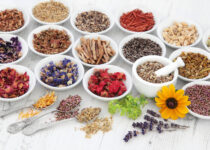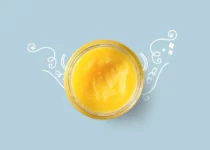The Unique Jatyadi Ghritam Ingredients: What is consists?
Jatyadi ghritam is a unique herbal preparation in Ayurveda for the treatment of various diseases. The ingredients present in this ayurvedic solution have powerful medicinal properties that help cure a wide variety of health problems. This blog post will discuss the individual components in jatyadi ghritam and what they do to promote good health.
Let’s take a look at these ingredients.
Jati
Jatyadi Ghritam alleviates Tridosha; it has a scorching potency and bitter and astringent flavors. Jati is beneficial to the eyes, has anti-toxic properties, and helps heal ulcers. It has antiseptic and antihelminthic qualities, according to research.
Nimba

It relieves pitta and Kapha dosha with chilly potency, bitter & astringent flavor. Kapha has properties that are anthelmintic, anti-toxic, as well as wound-healing. It removes pollutants from the blood and reduces inflammation.
Katuki
Katuki, also known as Picrorhiza, is a very well plant with a wide variety of pharmacological properties and a hepatoprotective effect. It can help with Kapha dosha and vitiated pitta issues. It acts as an anthelmintic, purgative, and liver stimulant.
Patola (patra)
Patola has antiepileptic and febrifuge properties, which helps relieve itchy and burning sensations while also causing purgation.
Nisa
It contains anti-allergenic, antioxidant, and antibacterial qualities, and it helps balance the Kapha & Pitta doshas. It has qualities such as kushtanghna (antiepileptic activity), kandungnya (itching relief), and vishaghna (antitoxic impact).
Saribha
It treats vitiated tridoshas and acts as an anti-allergy, anti-toxic, and blood purifier. Jwaragna (febrifuge), Kushtagna (antileprotic), and balya (nourishing) activities are all present.
Manjishta

It treats ulcers, diabetes, and skin conditions by alleviating astringent and bitter taste, vitiated pitta kapha dosha, purifying blood, imparting colors to the body, and pacifying vitiated pitta kapha dosha. It has been shown to have antihelminthic and anti-diabetic properties.
Abhaya
Sara (causes purgation), sothaghna(reduces oedema), Varnya (improves complexion), rasayana (rejuvenating), and chakshushya(good for eyes) are some of the significant uses of Abhaya.
Siktha
Antifungal and antibacterial activities are present in Siktha. It has a moisturizing effect on the skin.
Tutha
It treats tridosha, toxins, and a variety of skin ailments, as well as by being a powerful rejuvenator Tutha also helps in the treatment for vitiligo.
Naktahwa (seeds)
It is one of the major jatyadi ghritam ingredients. Itching, skin problems, worms, and inflammation can all be cured by the Vata kapha dosha. Naktahwa also aids in the healing of cuts and wounds.
Madhuka

Madhuka relieves Vata pitta doshas. It possesses vranahara (healing property), antibacterial, antiulcer, anti-inflammatory, and antioxidant properties.
The Bottom Line
If you’re looking for an Ayurvedic remedy that can help with various skin conditions, Jatyadi ghritam may be worth trying. If you’re interested in trying Jatyadi ghritam, talk to your Ayurvedic practitioner to see if it’s right for you.
Frequently Asked Questions
Q1. What is Tutha?
A. Tutha is an Ayurvedic herb that is commonly used in ghritams. It has a bitter taste and is known for its detoxifying properties.
Q2. What does Jatyadi Ghritam do?
A. Jatyadi Ghritam is Ayurvedic herbal ghee which helps in the treatment of skin diseases and wounds. It also helps reduce inflammation and pain.
Q3. How long does it take for Jatyadi Ghritam to work?
A. The effects of Jatyadi Ghritam can vary from person to person, but it takes at least three weeks to see results on your body.
Q4. What are the side effects of Jatyadi Ghritam?
A. Jatyadi Ghritam is safe, but some people may experience side effects such as stomach upset or diarrhea.



